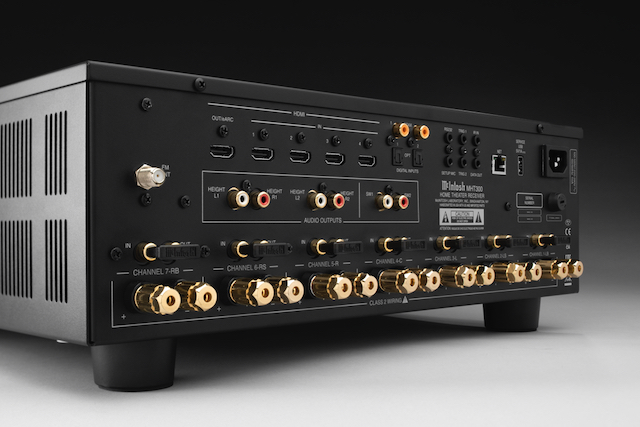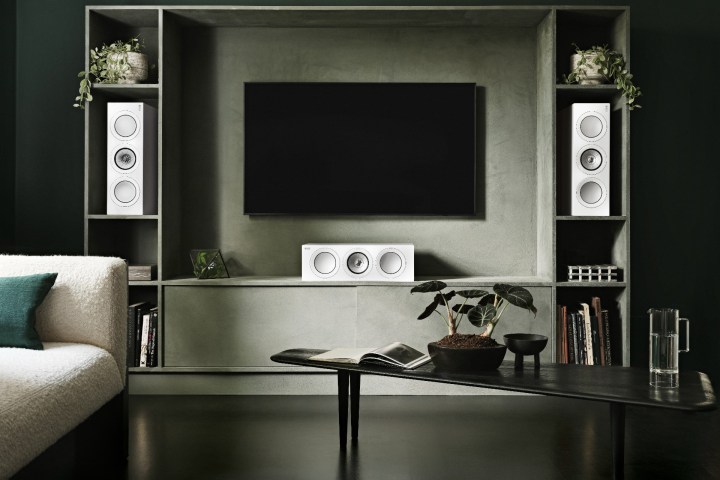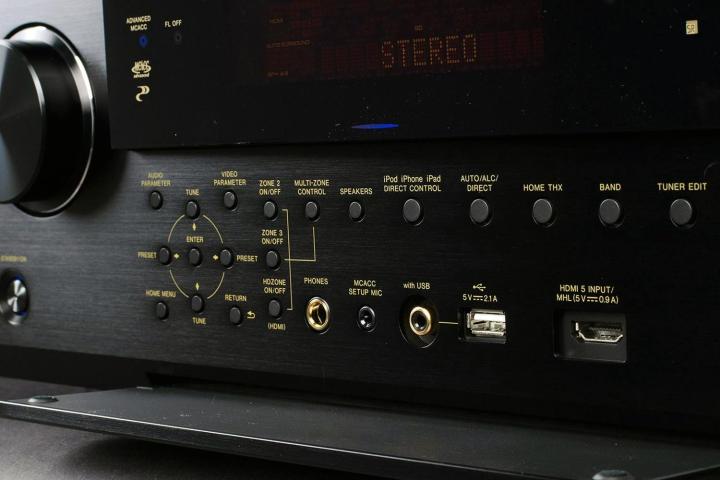Nothing beats the sound of an excellent audio/video receiver. When done right, they can bring power, depth, dynamics, and spaciousness to movies, sports, TV shows, and music. And whether you’re looking for a stereo receiver or integrated amplifier to drive your favorite turntable or digital music streaming services, or going full-bore AV receiver for that Dolby Atmos surround sound home theater experience, all the bells and whistles that get crammed into a single box of awesomeness need to be tested for sound, setup, functionality, and ease of use, among other traits.
This is, generally speaking, how we test an AV receiver.
We typically are sent our receivers on loan directly from the manufacturers or their official agencies. We put them through the gauntlet and then send them back. Our goal with receiver reviews is to give you an insider’s look at what owning one of these wünder-boxes will be like and what kind of sound quality you can expect from it.

More on the process
Out of the box
While unboxing a receiver doesn’t involve much in the way of fanfare and confetti (unless you count those damn packing peanuts), there’s still something about it that gets our blood pumping every time. Maybe it’s that “new-receiver smell.” Regardless, there’s a lot to be gleaned upon cracking open the box, and it’s here that we gather some impressions on build quality as we get a glimpse at the receiver’s chassis and experience its weight as we pull it free from its styrofoam cocoon. If we look closely, we can usually take a gander at the unit’s power supply, often a foreshadowing of how well the receiver will sound when put under heavy stress.
While we’re at it, we will catalog all the receiver’s accessories and cross-check the list against what the manufacturer claims should be in the box. You’d be surprised at how many review units show up missing remotes, power cables, and other items. We also make sure there isn’t any obvious damage incurred during shipping.
The setup

When setting up receivers, we consider the time it takes and how easy or complicated the process is from the point of view of a general user. We know that those less experienced than ourselves may be performing the setup, and we consider it especially important that things go smoothly. We look for well-laid-out setup guides, manuals, online resources, and even apps to lead the way. Intuitive graphic user interfaces (GUI) on the receivers are considered, too, which usually consist of a series of menu screens that users have to navigate in and out of.
Depending on the complexity of the system, setup can involve manually inputting speaker distances, crossover points, and adjusting channel levels. If the receiver comes with room correction or other software we test that as well, comparing it to the manual setup, and looking at ease of setup, use, and how well it works.
The audition
Now we listen. We start our tests with 2-channel stereo music. This allows the receiver to show us the best it has to offer in terms of amplification. While many manufacturers claim that their amps deliver equal power to all channels, we’ve seen several where that was not the case at all. With a multi-channel AV receiver, the stereo and direct modes ensure that as much power is being delivered to the front left and right speakers as possible.
During this stereo listening session, we listen to music tracks that we know inside and out, backward and forward, and from multiple sources and formats — from Spotify to hi-res streaming sources like Tidal, Amazon Music, and Apple Music to Bluetooth-connected phones, network streamers, CDs and more. We take copious notes on how the receiver performs at both moderate and high volumes.
While in 2-channel testing mode, we’ll also switch back and forth between a digital input (such as HDMI, optical) and an analog input. The idea here is to rank the receiver’s built-in DAC (digital-to-analog converter) against a reference DAC with which we are very familiar.

After our 2-channel testing, we move on to multi-channel music, primarily provided on SACD, DVD-Audio discs, and more recently with spatial audio and Dolby Atmos music tracks via services such as Apple Music and Amazon Music. This puts the receiver under much greater strain as it will have to feed several speakers with sound simultaneously and for prolonged periods of time. We are able to best scrutinize the receiver’s capability to reproduce sound accurately through multiple channels with music because it is much easier to critique the way the receiver supports the reproduction of a musical instrument than it is to analyze how well it made an explosion or thundering helicopter sound.
Finally, we’ll move on to movies and other visual media from a range of sources from major streaming services like Netflix, Apple TV+, Max, and Disney+, as well as from Blu-ray DVDs. Here, we listen to how well the receiver steers effects amongst channels to create a seamless 360-degree sound field. We’ll also listen for any breakup or distortion during highly explosive scenes as we push the receiver to extremely high volumes. We also use this time to check out the receiver’s video processing by comparing its processed video output to the output coming directly from our source.
Features
Testing a receiver’s various features is the most exhausting part of the process. We look at everything from connectivity and input/output options (i.e.: how many audio channels, HDMI, digital, analog, wireless, connections there are) and how well they integrate into various types of home entertainment products and setups such as TVs, speakers, subwoofers, streaming devices, turntables, network streamers, and whatever else we can throw at it.
We test each feature for ease of access and to verify that they function well. Then we will engage and evaluate any built-in audio enhancers that are meant to improve the sound of low-bitrate media. Finally, we take notes on how easy it is to access these features and how clearly designed the menu is for each of them.

The rest of the features tested are usually proprietary in nature and, frankly, too numerous and random to list here. Suffice it to say that we do spend time with as many of them as we can. Anything notable will be reported.
Writing the review
For us, simply organizing our evaluation notes into something that resembles a narrative is not good enough. We aim to give a little back-story on the manufacturer, describe our experience with the receiver, and put its audio performance and user experience into a context that is understandable, even for those not as technically inclined. We hope that by reading our receiver reviews, you will walk away with a feel for whether that particular model is something you should bother to audition yourself or remove from your shortlist because, ultimately, a personal audition is absolutely essential.



